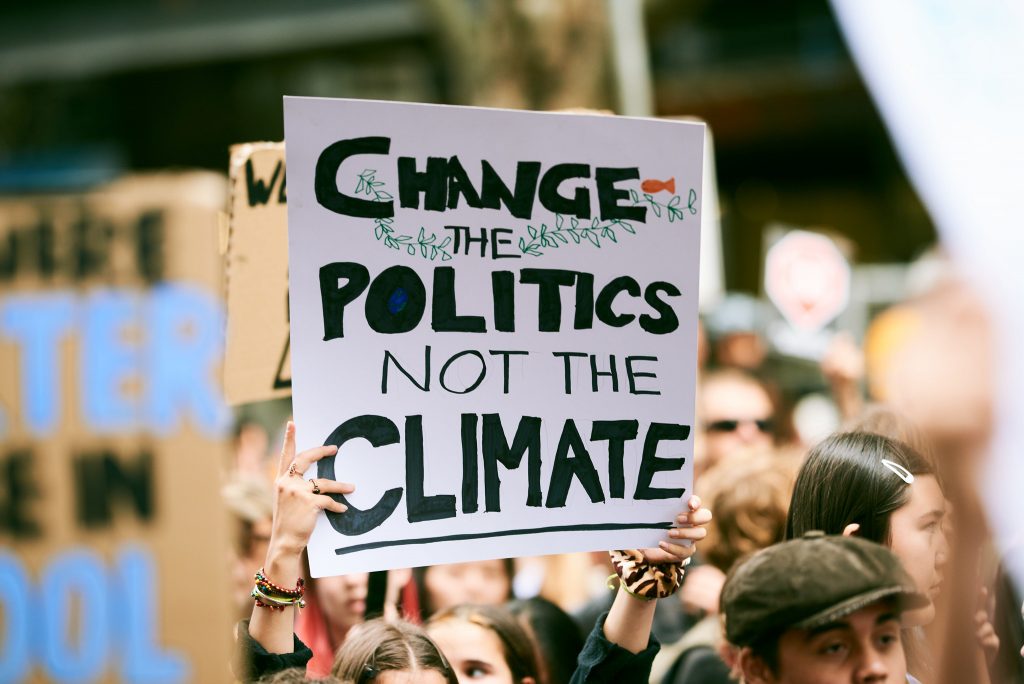
Melbourne, Australia climate march, May 3, 2019 (photo by julian meehan/Flickr).
As governments, companies, and non-governmental
organizations (NGOs) are meeting for the United Nations Climate Action
Summit, which is expected to propel commitments and raise awareness for
climate change, it is time to change the way we think and talk about how to
address the climate crisis. As this week’s New
York Times op-ed, “Do
We Really Have Only 12 Years to Avoid Climate Disaster?” by Drs. Gernot
Wagner and Constantine Samaras argues, the clock is ticking, with a hotter
planet already impacting lives, as well as land and ocean ecosystems. Climate
change is a creeping problem, not a sudden shock.
Framing the problem based on
certain milestones such as time frames (twelve years), agreements (Paris
Accords), thresholds (1.5C), and turning points (2C) conveys that it is an
abrupt problem triggered in the future, if we do not meet these targets. Inevitably,
fending off the worst-case climate scenario depends on how fast we take swift
action in the near term.
To some, framing climate change
in terms of milestones, thresholds, and tipping points might imply that there
is still plenty of time to act, running the risk of people delaying action or
conferring legitimacy on business as usual. However, at a time when emissions are at a record high, this notion is extremely risky. To others, the
scale of the problem with a point of no return in sight makes it seem futile to
commence or attempt solving, since all seems lost already.
Ideology, not science, reigns
over climate policy, with policymakers picking favored technologies while
intending to phase out others, such as nuclear power, a decision detrimental to
reaching climate goals. Decision makers, regarding climate as a problem of the
future, might also be inclined to procrastinate on politically problematic
decisions to reduce greenhouse gasses (GHG) today, increasing the risk of a
worst-case climate scenario.
This particularly includes further
delaying policies that bolster innovation, and that also stifle our ability to
develop, commercialize, and improve next generation clean energy technology. Some
policymakers use threshold arguments about climate to delay the scale-up of
existing technologies such as advanced nuclear, clean hydrogen, and carbon
capture backed by comprehensive policy, arguing they are not needed in light of
limited time to act. This complicates the net-zero
emissions transition. Failing to scale up these advanced clean energy
technologies limits our options to tackle climate change and pushes the task of
delivering steep emissions reductions into the future. It also increases the
uncertainty over whether the technologies we are relying on today, such as
renewables and electrification, are able to deliver net-zero emissions on their
own, amplifying climate risk. In addition, tackling the transport, energy, and
industrial transitions with a limited portfolio of options is expected to lead
to significantly higher mitigation costs. It would also require more radical
behavioral shifts. A precautionary approach to addressing the climate crisis
factoring in risk places a value on continuously creating and commercializing a
diversity of options.
Framing climate change as a
problem of the future and in terms of concepts using time and temperature is a
result of the elusiveness of the issue at hand: After all, what does it even
mean to mitigate dangerous climate change?
Indeed, we have attempted to
conceptualize the global GHG problem in various ways in the past. For instance,
the idea of a strong
correlation between cumulative emissions and temperature increase has given
rise to the carbon budget. As identified in a recent
article in Nature, “the concept
of a carbon budget has reframed mitigation from a flow problem (emissions in a
given year) to a stock problem (total allowable CO2 emissions over a
time period).” In fact, the stock of CO2 in the atmosphere will
determine the extent of warming, but it is the flow of CO2 from flue
stacks today that adds to the stock catalyzing future warming. To tackle our
emissions problem, we need to eliminate the flow of CO2 and
commercialize negative emissions technology to reduce the stock.
The path forward is therefore
clear: no new unabated power plants and industrial facilities may be built, and
everything else either needs to be retired, retrofitted with carbon
capture and storage technologies, or switch
to a non-emitting fuel such as hydrogen or nuclear power.
As choking the stream of CO2 immediately is
largely seen as unrealistic, it is expected that we will have to address not
only the flow of emissions from power plants, industrial facilities, and
transportation, but also the stock of CO2 already in the atmosphere.
This is underpinned by the Intergovernmental Panel on Climate Change (IPCC)’s four
scenarios, which all imply that we will need to remove emissions from the
atmosphere. Therefore, it is even more important not only to reduce emissions
with urgency today, but also to create, invest in, and deploy decarbonization options with a long-term view,
beyond just a decade. Concentrating on preferred options today might limit
available solutions tomorrow, stifling our ability to comprehensively and
continuously decarbonize.
Lee Beck is a Women Leaders in Energy fellow at the Atlantic Council’s Global Energy Center and is the senior advisor for advocacy and communications at the Global CCS Institute. You can follow her on Twitter @_Lee_Beck
EnergySource provides analysis and insight on key energy issues, making sense of key energy trends and their implications for geopolitics, geoeconomics, policy, and markets.
Read More
To some, framing climate change in terms of milestones, thresholds, and tipping points might imply that there is still plenty of time to act, but it is not only to reduce emissions with urgency today, but also to create, invest in, and deploy decarbonization options with a long-term view, beyond just a decade.
|